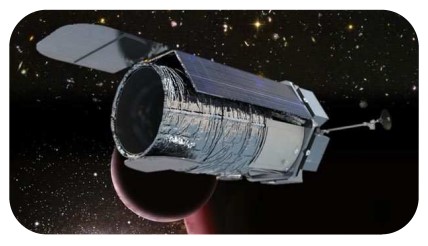The impact of radiation damage on photon counting with an EMCCD for the WFIRST-AFTA coronagraph
ABSTRACT
WFIRST-AFTA is a 2.4m class NASA observatory designed to address a wide range of science objectives using two complementary scientific payloads. The Wide Field Instrument (WFI) offers Hubble quality imaging over a 0.28 square degree field of view, and will gather NIR statistical data on exoplanets through gravitational microlensing. The second instrument is a high contrast coronagraph that will carry out the direct imaging and spectroscopic analysis of exoplanets, providing a means to probe the structure and composition of planetary systems.
The coronagraph instrument is expected to operate in low photon flux for long integration times, meaning all noise sources must be kept to a minimum. In order to satisfy the low noise requirements, the Electron Multiplication (EM)-CCD has been baselined for both the imaging and spectrograph cameras. The EMCCD was selected in comparison with other candidates because of its low effective electronic read noise at sub-electron values with appropriate multiplication gain setting. The presence of other noise sources, however, such as thermal dark signal and Clock Induced Charge (CIC), need to be characterised and mitigated. In addition, operation within a space environment will subject the device to radiation damage that will degrade the Charge Transfer Efficiency (CTE) of the device throughout the mission lifetime.
Here we present our latest results from pre- and post-irradiation testing of the e2v CCD201-20 BI EMCCD sensor, baselined for the WFIRST-AFTA coronagraph instrument. A description of the detector technology is presented, alongside considerations for operation within a space environment. The results from a room temperature irradiation are discussed in context with the nominal operating requirements of AFTA-C and future work which entails a cryogenic irradiation of the CCD201-20 is presented.
1. INTRODUCTION: THE WFIRST-AFTA CORONAGRAPH
The identification and characterisation of extrasolar planets has been of growing interest for the astronomical community throughout the past decade. At the time of writing, over 1000 separate systems have been identified and some studies have found that planetary systems are widely distributed throughout our galaxy.1 The ability to detect and characterise such systems has also advanced considerably within the same time-scales. Techniques such as transit photometry and Doppler spectroscopy have been highly successful2,3 and the development of advanced Adaptive Optics (AO) systems has further improved angular resolution for ground based observatories.
Despite these advances, the majority of exoplanets still have their presence confirmed indirectly through the effect of their presence on the parent star. Such discoveries are biased to large planets with short orbital periods which do not represent the entire population. Although many smaller and longer period planets have been discovered,4 these targets are typically too faint for detailed atmospheric characterisation within the time-scales of space based missions. The direct detection of exoplanets, through either direct imaging or spectroscopy, can allow for significantly more detailed characterisation. In addition, planets discovered through direct imaging can exhibit longer orbital periods and are a probe of planetary structure and composition in the absence of high irradiation from the parent star. Direct imaging techniques therefore have the potential to uncover and characterise a population of exoplanets both with properties similar to those within our own solar system and some which vastly differ, including Cold-Jupiters, Mini-Neptunes and Super-Earths.5
 Figure 1: WFIRST-AFTA mission concept.5 |
Direct detection is difficult since the light reflected from the target planet is orders of magnitude fainter than the parent star. A coronagraph is an optical system specifically suited to such an environment, creating high contrast within a small working angle through both occultation of the parent star and suppression of the resulting diffraction pattern. Achieving the required contrasts for the imaging of fainter exoplanets remains challenging, but will be absolutely necessary to further understand the formation of planetary systems and extensively characterise planetary atmospheres. The advancement of high contrast imaging in space was therefore the number 1 priority at medium scale for NASA in the 2010 decadal survey. The WFIRST-AFTA coronagraph (AFTA-C) is a direct response to this challenge, and will represent a significant advancement in the field. Contrasts of up to 10−9 will be possible, following post-processing, and the instrument will provide the first direct images of planets surrounding our nearest stellar neighbours that may be similar to our own giant planets.5 The science goals of the mission require every aspect of the instrument to be appropriately selected, including the instrument camera systems. The e2v CCD201-20 EMCCD has been baselined as the detector for each of the instrument cameras due to the low noise the detector can provide when operating under low-flux conditions.
Для продолжения чтения вы можете скачать полную версию материала по ссылке ниже